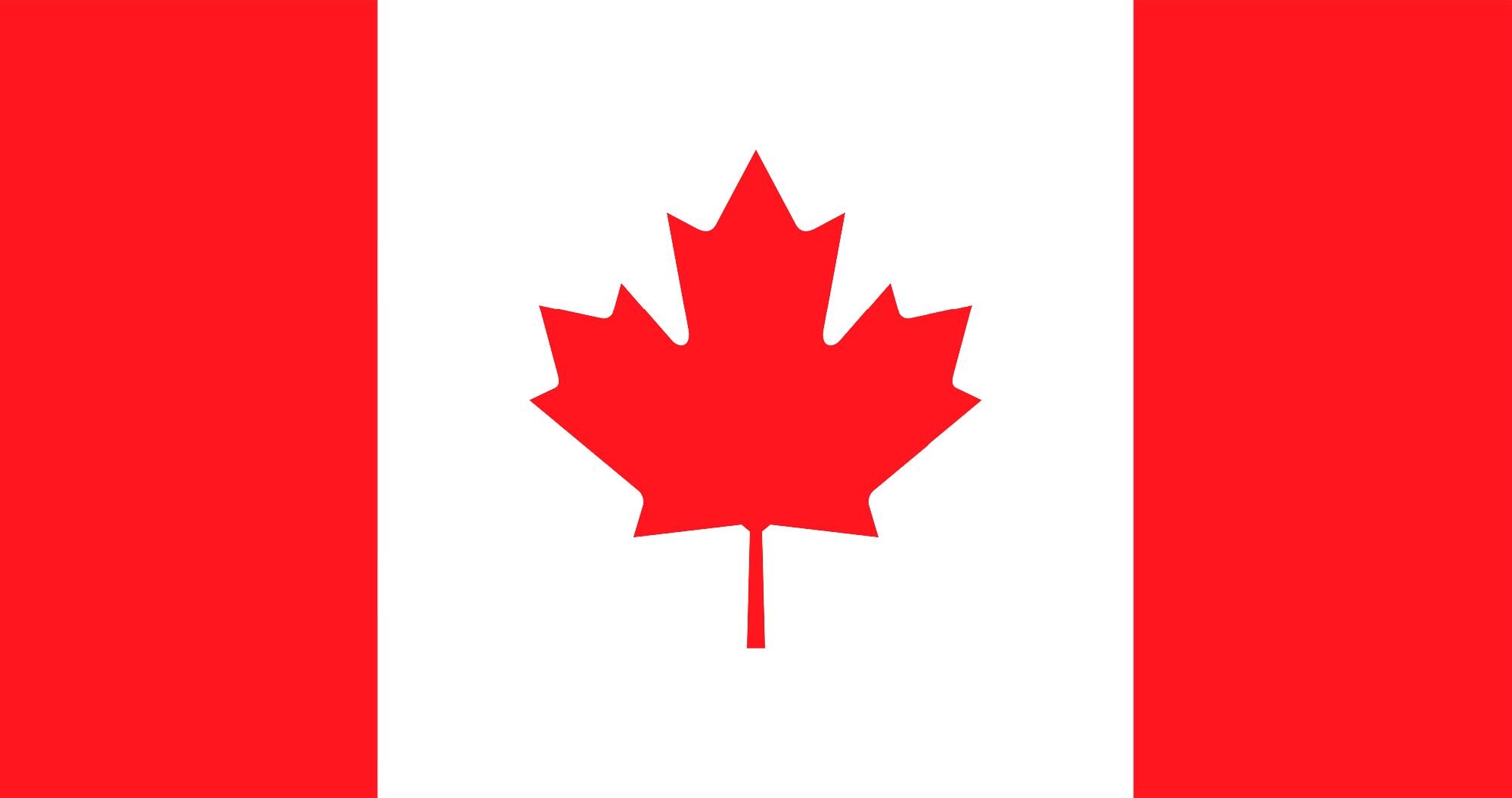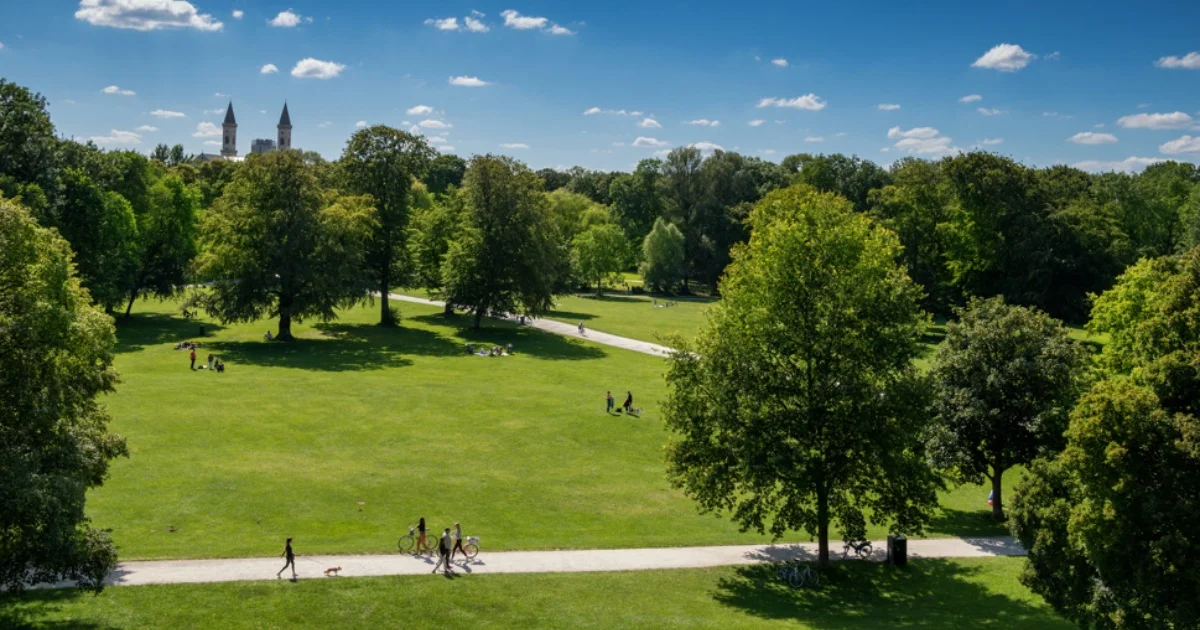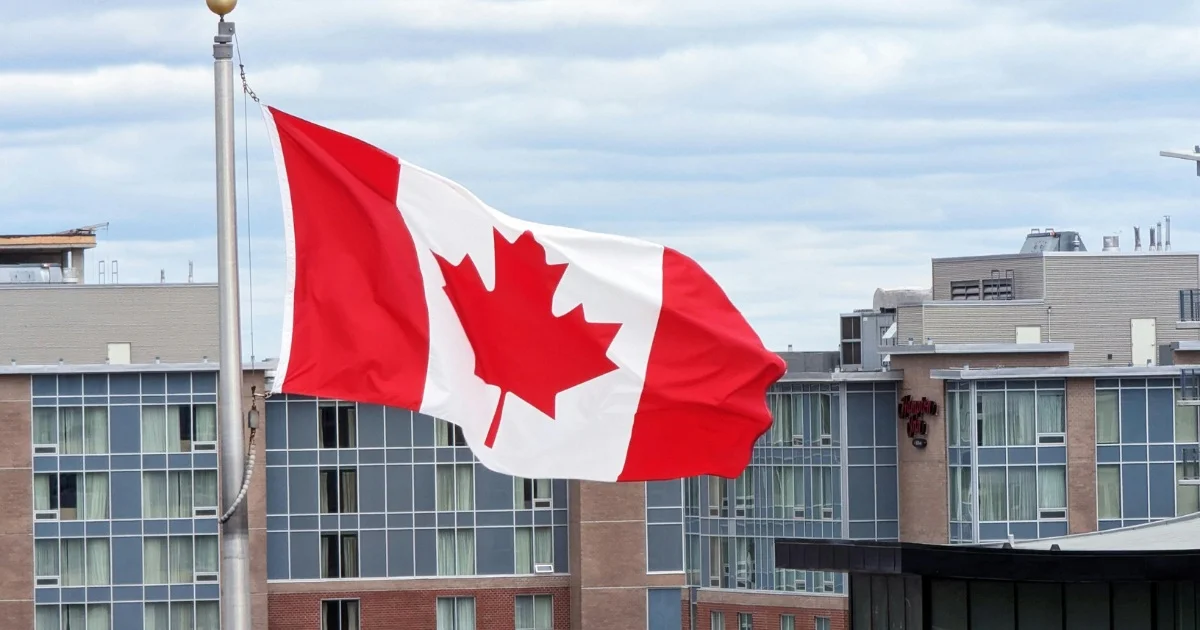
We collect basic website visitor information on this website and store it in cookies. We also utilize Google Analytics to track page view information to assist us in improving our website.
 Show your pride and prepare for Canada Day with our Canada-Themed Displays >>
Show your pride and prepare for Canada Day with our Canada-Themed Displays >> 

People of every age, gender, and creed enjoy beautiful outdoor spaces. But did you know there’s science to support the notion that green spaces improve community health?
According to a study published by the National Library of Medicine, environment, vegetation, and connectivity of green spaces were associated with improved health outcomes, although there were some differences based on age and gender.
The report also noted that areas that had greater tree canopies were more impactful than grassland. The primary outcomes that researchers found were health benefits surrounding allergic respiratory conditions, cardiovascular issues, and psychological well-being.
However, the quality of those green spaces matters.
According to the aforementioned study (titled ‘Green Space Quality and Health: A Systematic Review’), "Green spaces may vary in terms of objectively measurable good qualities," while bad qualities may discourage visitation and negate any potential health benefits.
Here are some of the major good qualities the researchers mention that promote wellness and overall mental well-being:
Tree canopy
Footpaths
Seating
The bad qualities listed that discourage visitation to green spaces include:
Proximity to busy roads
Lack of accessibility
Neighbourhood green spaces have been proven to improve mental health, particularly with disadvantaged groups. Green spaces improve mental well-being primarily by creating a place for social interactions, green visibility, and allowing for physical exercise.
However, access to green spaces offer health benefits including improved levels of mental health, physical fitness, cognitive and immune function, and lower mortality rates.
Physical activity has been proven to be beneficial for your mental health. Being active releases chemicals in your brain that cause you to feel good, which can boost self-esteem, help you concentrate, and even make falling asleep easier. What’s more? This is amplified by getting outside.
You know the best part about that? It's something you can do completely free of charge. That would make anybody feel good! A lot of us hesitate to get active because we've been fed the notion that fitness happens in the gym; However, finding exercise you're able to enjoy for minimal to no cost can give you opportunity to get active without the sacrifice.
You can get out of the house, meet people, enjoy the weather and scenery by entering beautiful outdoor spaces.
Reduced tension, stress, and mental fatigue.
A natural boost in energy.
A sense of achievement.
Increased focus and motivation.
Feeling less angry or frustrated.
A healthier appetite.
Enjoyment and having fun.
However, it isn’t just about getting physical (although this is also great!); there are other ways nature can boost your mental health. Research has shown that nature has the natural ability to make people feel happier while reducing levels of depression and anxiety, while also making life feel like it’s more worthwhile.
Here are some simple, easy things you can do in green spaces other than just working out:
Have a picnic with the family.
Attending a weekend farmer’s market.
Go for a leisurely stroll.
Find a bench to do arts and crafts.
Enjoy morning coffee or tea (or any drink, really).
Attend local events held in outdoor public spaces.
Remember, while going outdoors is a fantastic way to give yourself a mental health boost, don’t forget to touch base with your doctor and mental health professionals.

Did you know Canadians spend roughly 90% of their time indoors? Post-pandemic, many people have equipped their homes with most of what they need, whether that's enough food to last a few weeks, a home gym or equipment, and plenty of indoor houseplants.
Many people work from home, too. In the modern era, few of us are likely to leave our homes for anything more than personal obligations like errands. Getting outdoors is great for your physical health, even if you have all the amenities you need to workout at home. Because getting physical outdoors has specific benefits!
Spending time outdoors can boost physical health in a lot of ways, and the best part is, you don't need to spend hours upon hours to reap the benefits. A study conducted in 2019 showed that 120 minutes a week in nature has been connected with good health outcomes and overall well-being. You don’t need to do that all at once, either.
You can either go on a 2-hour walk/jog or even break it up into smaller increments throughout the week. That 120 minutes per week is the sweet spot.
Here are some of the physical benefits of getting exercise outside:
Improved breathing
Better sleep
Increased motivation
Boosted immune function
Improved cardiovascular health
Increased vitamin D
OK, we’ve looked at the research, but how do you practically make a beautiful outdoor space that improves the health of the community? Well, there are a few things you need to keep in mind!
Having the right foliage and outdoor decor makes the space appealing to the community at large.
Having accessible site furniture that makes your green space welcoming to every one of every age and capability.
Classic Displays has everything you need to make healthy green spaces. From benches, to waste and recycling bins, as well as planters and tree guards. Plus, we have a lot more! We’ll get more into the specifics as we continue.
So, how do we create the most beautiful outdoor spaces for your community? Let’s explore.
Keeping your site furniture maintained isn’t just for aesthetics, it’s also to maintain accessibility. Speaking of accessible site furniture , you need to go for options that work well for everyone. Park benches, for example, should have supportive armrests to help those with physical limitations safely rise and stand from the seat.
The bench also needs a lot of clearance around it for wheelchair users.
Here’s how to properly maintain outdoor site furniture:
Clean surfaces regularly with mild soap and water.
Inspect for damage or wear periodically.
Tighten loose screws, bolts, or fasteners.
Apply protective coatings as needed (i.e., paint, sealant).
Remove debris and dirt from around furniture bases.
Store or cover during extreme weather conditions.
Replace damaged components promptly.
Classic Displays has several pieces of accessible site furniture. Check out our Compliant Picnic Table and our Accessible Riverside Bench.
You need some versatile site furniture that can provide a safe place to relax, eat, drink, and enjoy activities. What does that mean? Plenty of picnic tables! Picnic tables are some of the most versatile pieces of site furniture because they can be used as a place to relax and enjoy the surroundings, while also being a perfect surface for activities like arts and crafts, board games, and even chess.
Make sure all outdoor spaces have regular maintenance. This means keeping site furniture in good condition, keeping grass and foliage trimmed and clear from walkways, and the area clear from trash. Keeping this space clean not only improves its aesthetics, but it also promotes community green efforts.
Making sure there is ample trash and recycling bins within reach for disposables means you keep the surrounding area healthy, while ensuring materials are going in the right place. This also gets the community involved in green efforts, making an overall healthier environment for everyone.
You should also invest in signs that encourage people not to litter and “stoop and scoop” after their pets. Also, have a specialized bin for animal waste: no one wants to walk by a trash can that smells like poo.
Check out Classic Displays Urban Flare Container and Fido 25 Dog Waste Bin.
Whether you bike for sport or use it as your primary means of transportation, you need a safe place to store your ride. Green spaces need to have bike racks that are secure enough that those visiting to lock up their bikes to take a break and enjoy the beautiful outdoor space.
Classic Displays is renowned for our stunning Christmas décor, but we also craft high-quality site furniture designed to keep your community green and accessible. If any of our products caught your eye today, we’d love to hear from you!
With over 46 years of experience, our team is ready to meet your community’s needs with expertise and care.

How you choose to fly your Canadian flags isn’t dictated by law, but depending on the situation and application, there is a lot of etiquette involved. Whether it’s for an important ceremony or you just want to add a patriotic touch to your home, let’s talk about Canada flag etiquette and the surprising rules you probably didn’t know.
Many Canadians are as patriotic as they come, so knowing how to properly hang a flag, based on time and location, is important. Don't worry, Classic Displays is here to provide you with all the Canadian flag etiquette!
Let’s go through the surprising rules of Canadian flag etiquette you might not know.
You can fly the National Flag of Canada at any time, day or night. Unlike some flags, it doesn’t need to be lit after sunset. When it comes to displaying a Canadian flag from the home or office, the rules aren’t as intimidating as you think:
When displaying your Canadian flag, it’s best to make sure that you put it in a central place that really highlights its honour. If you want to pair the Canadian flag with other banners, it’s probably best to have it displayed higher than the rest; however, this can change based on the celebration or circumstance.
Make sure your flag is always hung upright, with the maple leaf facing outwards and clearly visible. Hanging the flag improperly looks not only sloppy but also disrespectful, depending on who you ask. While it’s unlikely you’ll be ousted from the community with pitchforks for hanging a flag improperly from your home property, other scenarios, such as government speaking arrangements, are another story.
Make sure you’re using an undamaged material that can withstand the unreliable Ontario weather. Also, ensure the flag proportions are correct: the flag's width should be twice its height.
In Canada, the National Flag must be flown at all federal buildings, military bases (in and outside of the country), as well as airports. Here is a more detailed list of buildings and locations that are required to display the Canadian Flag:
Federal Government Buildings
This includes parliament buildings such as the Senate and House of Commons, as well as Federal administrative offices.
Crown Corporations
This includes headquarters and offices owned by federal corporations.
Military Installations
This includes bases and headquarters of the Canadian Armed Forces.
Canadian Embassies, High Commissions, and Consulates
This includes all diplomatic missions abroad, meaning all missions are required to display Canada’s National Flag.
Royal Canadian Mounted Police (RCMP) Buildings
This includes RCMP headquarters and other major facilities.
National Museums and Historic Sites
And finally, all facilities operated by Parks Canada and national museums.
The position of the Canadian flag is important when it comes to practicing proper etiquette. While some of these steps may seem relatively simple, they're still important to note, especially if you're not in the know!
When you want to fly a flag horizontally, the Canadian National Flag is always flown with the central maple leaf pointing upwards. When you want to fly a flag vertically, the Canadian National Flag is always flown with the central maple leaf pointing upwards.
Flying the Canadian flag upside down is considered generally disrespectful, unless in very specific, internationally recognized circumstances. According to the Government of Canada, the only time the flag should be flown upside down is to signal "international distress in instances of extreme danger to life." Occasionally, the flag may be flown upside down as a sign of protest.
However, in what cases would you display a flag horizontally? Take a look at Classic Display’s Horizontal Canada Flag Street Pole Banner: it’s the perfect patriotic decoration. They can also be flown like this on a flag pole for specific occasions, such as sporting events or other official celebrations.
When hanging the National Flag vertically, the flag itself needs to be positioned so that the upper area of the leaf is pointing to the left, ensuring it's visible to those standing and facing the flag. Flying the flag in this manner ensures the canton (the most important part of the flag) faces the top left corner. This is a position of honour, and is generally considered proper flag etiquette.
The Canadian flag must always be flown on its own designated flagpole, with the flag’s sleeve closest to the pole itself. As mentioned, the canton needs to be placed nearest the top of the pole/mast. The flag needs to be flown on its own flagpole because it’s considered poor etiquette to fly Canada’s National Flag alongside another, regardless of type, on the same pole. The flag CAN be flown alongside other flags, just not on the same pole.
There are three different types of flagpoles and applications you’ll commonly see:
Exterior permanent poles: Generally located outside of buildings, although they are occasionally featured on top of buildings or on proximate grounds. These flag poles need to be fitted with functional hoisting devices (halyard and pulley) so the flag is easy to raise, lower, and bring to half-mast.
Exterior portable flagpoles: Similar applications as mentioned above, paired with the convenience of being portable. These flag poles can be erected and dismantled as needed/based on season or celebration, and have a similar halyard and pulley system as permanent poles.
Interior flag poles: These you’ll often see during important government events or military speeches. These poles are also portable and are generally on a much smaller scale. They tend to have a base holding the pole upright, allowing the flag to drape.
Need a Canadian flag? Classic Displays offers durable Canadian flags in various dimensions to meet your needs.
(Available Sizes: 45 cm x 90 cm, 70 cm x 140 cm, 90 cm x 180 cm, 115 cm x 230 cm, 135 cm x 270 cm, 180 cm x 360 cm)
Flying a flag at half-mast has serious national significance. Flags flown at half-mast signify respect, as well as collective sorrow during times of national mourning. When the Canadian flag is flown at half-mast, it's the nation's way of recognizing significant loss and tragedy, while honouring those involved.
All of the National Flags are globally recognized and provide a visual representation of your country's sense of sorrow or pride, depending on the circumstance. This is why flag etiquette and education are essential.
The Government of Canada sees the half-masting of a flag as so significant that they've implemented rules for half-masting the Canadian flag, ensuring that the application is consistent across all federal buildings and installations. Provinces, territories, and municipalities across the country have subsequently adopted similar rules out of respect and honour.
The term “dipping the flag” generally refers to lowering a flag downward or even tilting it towards the ground. It’s a sign of respect during important military ceremonial contexts, generally when being carried by flag bearers. This is another example of a circumstance where portable flag poles or staffs are useful.
To avoid confusion, it’s important to note that the National Flag is NEVER dipped.
Instead, some of the flags that may be dipped during a military ceremony include:
Military Unit Standards and Colours
Flags of Allies or International Organizations
When looking at Canada’s specific historical practices, dipping the flag is generally only done during military ceremonies. Otherwise, there are no other notable contexts in Canada where dipping a flag is considered necessary or even customary.
The official etiquette of dipping the flag goes as follows: the flag bearers (carrying the flag so it flows horizontally) carefully lower flagstaffs or poles at a 45-degree angle. In some cases, the flags can also be lowered until they reach the ground.
However, in other ceremonial military contexts, when salutes are being given, the flag is never dipped and instead is allowed to fly freely. Flag bearers extend their hands to let the flag flow until the conclusion of the salute, where the flags are then gathered.
Now that we’ve gone through a lot of the historical significance, let’s explore some additional ways you can display the Canadian National Flag.

As Decor
There are plenty of Canadian-themed decorations and displays you can feature to show your patriotism without necessarily flying a Canadian flag. Classic Displays specializes in holiday displays, including Canadian-themed displays that are perfect for national holidays. These come with fewer historical rules. We also have an array of flags and banners to choose from!
On Your Car
When it comes to Canadian flag etiquette, the respective place of honour for flying the flag is the front right fender on the passenger's side. If you're flying the flag alone, this is the official spot for it.
On a Boat or Ship
Canadian ships and boats should fly the National Flag of Canada in its proper national colours, even if it's just a leisure watercraft. Canadian ships and boats should fly the National Flag of Canada in its proper national colours, even if it's just a leisure watercraft. Foreign vessels, on the other hand, can fly the Canadian flag as a means of courtesy when docking in a Canadian port. In this circumstance, the flag is traditionally flown from the foremast.
Flying Flags Alongside the National
As we mentioned, the National Flag of Canada should always be flown on its own flagpole. However, other flags can be flown next to the National Flag, including:
Indigenous Flags
Other National Flags
Municipal Flags
Organizational Flags (NATO, United Nations)
A proudly Canadian-owned and operated company, Classic Displays has been bringing magic to events for more than 46 years. Whether you need flags and banners or large light-up displays, we have everything you need to show your community you love Canada as much as we do! Contact us today.